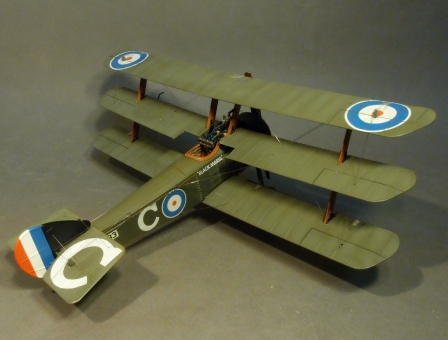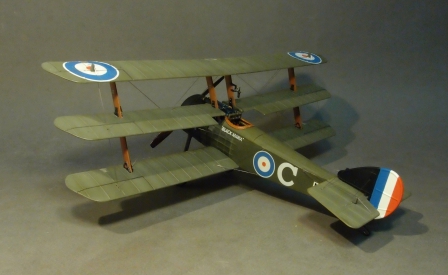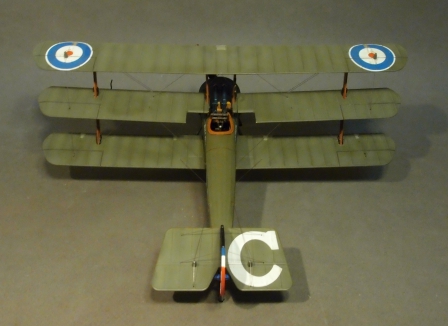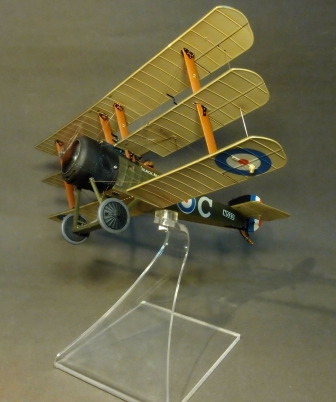
KNIGHTS OF THE SKIES

ACE-30
Sopwith Triplane ,
N533 "C" "Black Maria",10 Naval Squadron,
Droglandt, France, June 1917
(1 pc)
US$248
The Sopwith Triplane was a British single seat fighter aircraft designed
and manufactured by the Sopwith Aviation Company during the First World War.
It was the first military triplane to see operational service.
The Triplane joined Royal Naval Air Service squadrons in early 1917 and was immediately successful.
It was nevertheless built in comparatively small numbers and was withdrawn from
active service as Sopwith Camels arrived in the latter half of 1917.
The Triplane's combat debut was highly successful.
The new fighter's exceptional rate of climb and high service ceiling
gave it a marked advantage over the Albatros D.III,
though the Triplane was slower in a dive.
The Germans were so impressed by the performance of the Triplane
that it spawned a brief triplane craze among German aircraft manufacturers,
resulting in the successful Fokker DR1.
Pilots nicknamed the aircraft the Tripehound or simply the Tripe.
On July 27th 1917,
Raymond Collishaw achieved 2 victories in this triplane,
which was one of only six Triplanes armed with twin Vickers guns.
 |
The Triplane was famously flown by No. 10 Naval Squadron's "B"Flight,
better known as "Black Flight."
This all-Canadian flight was commanded by the ace Raymond Collishaw.
Their aircraft, named Black Maria,
Black Prince, Black George, Black Death and Black Sheep,
were distinguishable by their black-painted fins and cowlings.
Black Flight claimed 87 German aircraft in three months while equipped with the Triplane.
Collishaw himself scored 34 of his eventual 60 victories in the aircraft,
making him the top Triplane ace.

|
For a variety of reasons,
the Triplane's combat career was comparatively brief.
In service,
the Triplane proved difficult to repair.
The fuel and oil tanks were inaccessible without substantial disassembly of the wings and fuselage.
Even relatively minor repairs had to be made at rear echelon repair depots.
Moreover, spare parts became difficult to obtain during the summer of 1917,
and No. 1 Naval Squadron's complement was reduced from 18 to 15 aircraft.
The Triplane also gained a reputation for structural weakness because the wings sometimes collapsed in steep dives.
This defect was attributed to the use of light gauge bracing wires in the 46 aircraft built by subcontractor Clayton & Shuttleworth.
Another drawback of the Triplane was its light armament.
While contemporary Albatros fighters were armed with two guns,
most Triplanes were armed with a single synchronised Vickers machine gun.
Efforts to fit twin guns to the Triplane met with mixed results.
Clayton & Shuttleworth built six experimental Triplanes with twin guns.
We now accept PAYPAL,
to purchase your figures please send your order by e-mail to
inquiry@johnjenkinsdesigns.com
after checking that everything is available,
you will be billed via PAYPAL.
your order will be shipped on confirmation of payment.
worldwide airmail 12%
(minimum postage us$10)
JOHN JENKINS DESIGNS
UNIT 6E, TOWER 2,
KING LEY INDUSTRIAL BUILDING,
33-35 YIP KAN STREET,
WONG CHUK HANG,
HONG KONG
Tel: 852 9041 9065




